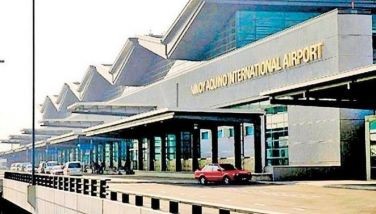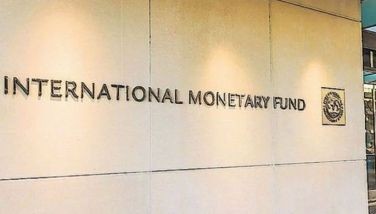Subic sea, air ports expansion pushed under Marcos term

SUBIC BAY FREEPORT, Philippines — The Subic Bay Metropolitan Authority (SBMA) is pushing for some P28.18-billion worth of expansion and modernization projects for both air and sea ports in this special economic zone to boost port capacity, increase competitiveness and generate more revenue.
SBMA Chairman and Administrator Eduardo Jose Aliño said in a statement that Subic’s port development program dovetails with the Luzon Economic Corridor (LEC) Development initiative of President Ferdinand Marcos Jr., whose projects are expected for completion by the end of his term in 2028.
Aliño previously announced the Subic development projects during the “Build Better More” Infrastructure Forum held at the New Clark City NCC in Capas, Tarlac last week.
In the statement, Aliño identified two multipurpose port terminals (MPT) to be undertaken under the Public Investment Program of the National Economic Development Authority with a project cost of P11 billion.
The first will be built at Lower MAU, formerly a camp for the Marine Amphibious Unit (hence MAU) when Subic was still under the U.S. Navy. It will have a 570-meter wharf, with a depth of 12.9 meters, and a back-up area of 17.2 hectares for warehouses and open storage areas.
The second MPT will be at the Redondo Peninsula, which hosted the former Hanjin shipbuilding facility. It will have a 600-meter wharf, with a depth of 14 meters, and a back-up area of 30 hectares for warehouses, open storage, offices and support facilities.
The first MPT will provide an additional capacity of 2.5 million metric tons for bulk cargoes, while the second will have an additional 3 million metric tons, Aliño said.
The SBMA also plans to construct a Cruise Passenger Terminal at P1.2 billion for Phase 1, and P8.96 billion for Phase 2.
The facility will have a double-berth 380-meter-long pier with a depth of 12 meters, with the reclamation of the nearby 20 hectares for Phase 2.
“The high percentage of domestic and international commerce is by sea; therefore, the efficiency of maritime transportation has become increasingly essential to national competitiveness,” SBMA chief pointed out.
On the other hand, “international and local cruise operations will greatly benefit the economy with increased employment, more revenue from port fees, and increased tourism income,” Aliño added.
Meanwhile, development projects at the Subic Bay International Airport (SBIA) complex costing P7.02 billion will consist of improvement of existing buildings and construction of new facilities, including a hotel and multi-level carpark worth P4.3 billion.
The modernization project would allow the SBIA to accommodate 6 million passengers annually, Aliño said.
“Locators, port users and prospective investors will also benefit from upgraded and modernized airport facilities, with increased SBIA efficiency, capacity and revenue generation,” he added.
The proposed SBIA expansion project will also include the extension of the runway from a length of 2,745 meters to 3,300 meters, expanded aprons, relocated control tower, and a new passenger terminal building.
The proposed airport development program is expected to generate a conservative revenue of P12.5 billion annually, Aliño also said.
- Latest
- Trending






























